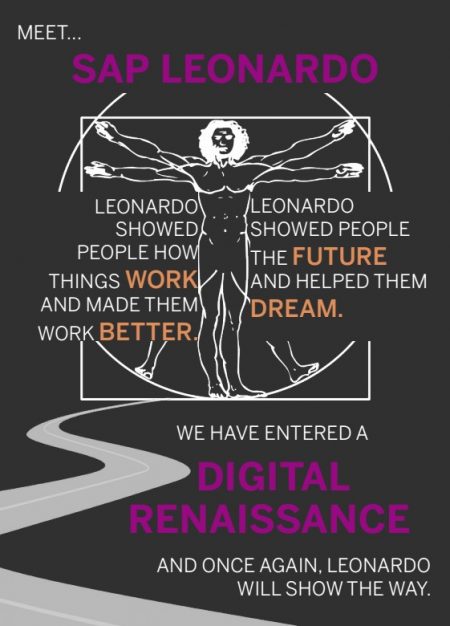No single technology can fully deliver what a business needs to digitally transform, but SAP’s latest solution is hoping to bring together several software capabilities to assist its customers on their digital journey.
The company has expanded the abilities of SAP Leonardo, its innovation system, to include integrations in machine learning, Internet of Things (IoT), big data, and blockchain technologies, all on its SAP Cloud Platform.
This digital innovation platform will offer customers either “an industry-focused approach called industry accelerators, aligned to specific use cases with fixed prices and timelines,” or a flexible approach that allows customers to build whatever they want and need for their industry or business. SAP did not provide pricing details at the time of publishing.
“It’s important for us to listen to our customers, and if they want more integration, that’s what they’re going to get [with Leonardo’s expanded capabilities],” says SAP CEO Bill McDermott during a press conference at the company’s 2017 Sapphire Now conference in Orlando. “With machine learning and connectivity integrations, SAP Leonardo will get smarter over time and evolve quickly, and that’s where we see the most benefits for our customers.”
Leonardo will also be integrated into SAP’s existing applications to make them more powerful and intelligent, and will allow developers and partners to build their own custom applications, the company says. This will be supported by a network of SAP Leonardo Centres with initial locations in New York, Paris, Sao Leopoldo, and Bangalore.
“There are a ton of platforms on the market, but they’re all living in silos,” explains Bernd Leukert, executive board member of SAP with a global responsibility for development and delivery of products. “SAP Leonardo can marry any data, whether its physical asset data or human resources data within an enterprise resource planning system, or wearables data, or external data, on our core SAP Cloud Platform and make sense of it. And with an open API, no other company can offer this connectivity.”
He says that currently, machine learning systems are being used by people for digital assistance, but as people get more comfortable and confident using them, they will become more autonomous, leaving people to focus on value-added activities instead of “getting the job done.”
“Look at customer service centres, for example, where people can’t keep up with the sheer number of requests for assistance,” McDermott adds as he continues Leukert’s thought. “Even with all the training in the world, people won’t be as good or as quick as a computer at answering simple customer questions. But if a computer can handle those requests, and only need human assistance half the time, for example, businesses would be much more efficient. Change is happening faster than we expect – our customers need machine learning and automation.”
SAP expands partnership with Google
SAP and Google announced an innovation partnership in March 2017, which now includes “additional certification of SAP technology and applications on Google Cloud Platform (GCP),” the company says. SAP and Google hope that this will make SAP Cloud Platform on GCP available globally, and encourage “future collaboration and integrations in machine learning, IoT, data transparency and custodian services, and workplace productivity.”
SAP Cloud Platform goes agile
SAP also announced at Sapphire that its Cloud Platform now offers an agile multicloud environment, which will allow customers to “develop and run apps utilizing their choice of infrastructure providers,” including the big three: Amazon Web Services, Microsoft Azure, and GCP. The Cloud Platform also comes with Multilanguage runtime environments, including Java, Node.js and SAP HANA extended application services.






